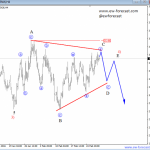Oil prices volatile as trade conflict between U.S. and China escalates

Oil prices seesawed in nervous trading on Friday as the United States slapped a raft of tariffs on Chinese goods in an escalating trade war between the world’s two biggest economies.
Oil prices initially fell on Friday, along with Asian stock markets.
Yet by 0649 GMT, U.S. West Texas Intermediate (WTI) crude futures were up 16 cents, or 0.2 percent, from their last settlement at $73.10 per barrel.
Brent crude futures LCOc1 were down 7 cents, or 0.1 percent, at $77.32.
The trade dispute between the United States and China is looming over oil markets.
Washington put the tariffs in place on Chinese goods from 12:01 a.m. Washington D.C. time (0401 GMT) on Friday.
China has said it will impose tariffs on 545 U.S. goods in return. Meanwhile, major Chinese ports have already delayed clearing goods from the United States, according to several sources.
“We’re headed for an unparalleled trade conflict between the world’s largest economies,” said Stephen Innes, head of trading for Asia/Pacific at brokerage OANDA.
As part of the retaliatory response, Beijing has threatened a 25 percent tariff on U.S. crude imports, although it has not specified an introduction date.
American crude shipments to China are around 400,000 barrels per day (bpd), worth $1 billion a month at current prices.
Tariffs would make U.S. oil uncompetitive in China.
An executive from China’s Dongming Petrochemical Group said he expected Beijing to soon impose the tariff on U.S. oil imports.
He added his refinery had canceled U.S. crude orders and would switch to Middle East or West African supplies instead.
Tariffs, Sanctions & Disruptions
The potential trade war between the United States and China comes amid a tight oil market.
Energy consultancy FGE on Friday issued a warning of looming supply shortages due to U.S. sanctions against Iran, and because of disruptions elsewhere.
“Iran’s exports are some 2.7 million bpd, including condensate,” it noted.
Even if the U.S. government grants some waivers to allies, FGE estimated 1.7 million to 2 million bpd of crude and condensate would be cut out of markets once its sanctions are implemented.
U.S. investment bank Jefferies said on Friday it expected “a drop in Iranian exports well in excess of 1 million bpd” due to the U.S. sanctions.
Some are already reacting. South Korea, a major buyer of Iranian oil and condensate, will not lift any Iranian oil in July for the first time since August 2012, three sources familiar with the matter said on Friday.
Cutting Iran out from oil trading comes amid other disruptions.
“Venezuela … will lose another 400,000 bpd by year-end with production going to below 1 million bpd,” FGE said, adding that another 300,000 bpd of Libyan capacity was disrupted.
Although Saudi Arabia and Russia have said they would raise output to make up for disruptions, FGE said “there simply is not enough capacity to make up for Iran’s crude losses, plus Venezuela and Libya”, and warned of the possibility of oil prices rising to $100 per barrel.
Source: Reuters – Oil markets volatile as trade conflict between U.S. and China escalates





























